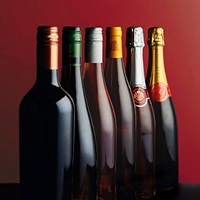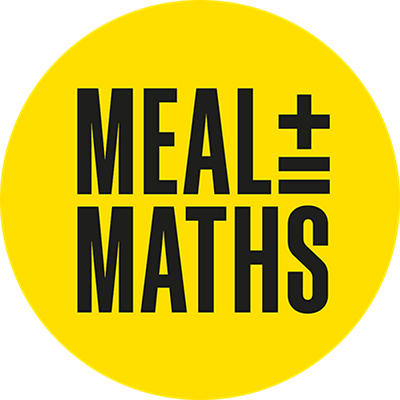Fresh & ChilledBakeryFood CupboardFrozenBeer, Wine & SpiritsTea, Coffee & Soft DrinksHouseholdToiletries, Health & BeautyBaby & ToddlerPetHomeShop by OccasionNewOrganic ShopFirst For WelfareDietary & LifestyleWaitrose BrandsBrandsNewEveryday ValueValentine's DayPancake DayEasterChristmas DinnerWine, Fizz & DrinksParty FoodWine, Fizz & DrinksFresh FruitFresh VegetablesIn Season Fruit & VegetablesFresh Salad & HerbsReady MealsFresh MeatFresh Chicken & PoultryChilled Fish & SeafoodMilk, Butter & EggsCheeseYogurtsChilled Juice, Smoothies & DrinksCooked Meats, Deli & DipsPies, Quiches & Savoury SnacksDessertsEasy To Cook MealsFresh Pizza & Garlic BreadFresh Pasta & SaucesFresh SoupsVegetarian FoodVeganFood To GoBreadFresh BreadCakes & TartsRolls, Bagels & ThinsBaguettes, Ciabatta & Continental BreadsWraps, Tortillas & Pitta BreadBirthday & Celebration CakesCroissants, Brioche & PastriesCrumpets, Pancakes & WafflesDoughnuts, Muffins & CookiesPart Baked Bread & RollsTeacakes, Fruit Loaves & SconesPatisserieBreakfast CerealCrisps, Snacks & NutsChocolate & SweetsBiscuits & CrackersTins, Cans & PacketsRice, Pasta & PulsesSugar & Home BakingJam, Honey & SpreadsDried Herbs, Oils & VinegarCondiments, Dressings & MarinadesJarred Goods, Pickles & OlivesDessertsCooking Sauces & Meal KitsIce Cream, Frozen Yogurt & SorbetsFrozen Vegetables, Herbs & RiceFrozen Fish & SeafoodFrozen Meat & PoultryFrozen Chips & PotatoesFrozen Ready MealsFrozen DessertsFrozen Fruits & Smoothie MixesFrozen Bread, Croissants & PastryFrozen PizzaFrozen Snacks & Party FoodFrozen Vegetarian FoodFrozen VeganIce CubesWineChampagne & Sparkling WineBeerCiderSpirits & LiqueursCocktails & Pre Mixed DrinksAlcohol Free and Low Alcohol DrinksTonic & MixersIce Cubes, Lemons & LimesGlassware & BarwareGiftsTeaCoffeeHot Chocolate & MaltsWaterSquash & CordialsJuicesFizzy DrinksAdult Drinks & MixersSports & Energy DrinksFunctional & Wellness DrinksKids & Lunchbox DrinksLaundry & DetergentsToilet RollsCleaning CupboardDishwashingGeneral HouseholdKitchen RollsCling Film, Foils & Food StorageCandles & Air FreshenersBin BagsEco FriendlyTissuesLight BulbsBigger PacksBath, Shower & SoapDental CareHair CarePharmacy & HealthFacial SkincareDeodorants & Body SpraysBody CareHealth & Beauty GiftingTissuesMen's ToiletriesShaving & Hair RemovalSensitive Bladder & IncontinenceNatural BeautyTights & SocksPeriod & Intimate CareSun Creams & After SunBaby & Toddler FoodMilk & FormulaBaby & Toddler ToiletriesBaby & Toddler WipesNappies & PantsBottles & Breast Feeding AccessoriesBaby & Toddler HealthcareBrandsBaby & Child ToysBaby Toys, Clothing & LaundryCatsDogsBird FoodShop By BrandTreatsCook & DineBeddingBath & Bathroom AccessoriesGarden & OutdoorCandles & Home FragranceHome AccessoriesFresh Flowers & PlantsToysCards, Gifts & PartyReusable BagsElectricalsStationery, Home Office & ElectricalsSewing, Clothes Care & RepairUtilityNewsagent & TobacconistNewsagentsGiftsBuild a Food HamperCharcuterieAfternoon TeaEasy Cook DinnerLunchbox EssentialsWork from Home LunchBottomless BrunchBreakfast on the GoMovie NightFresh, Chilled & BakeryDrinksFood CupboardHousehold & FamilyToiletries, Health & BeautyFree From & Specialist EatingFrozenDuchy OrganicFresh & ChilledBakeryFrozenFood CupboardTea, Coffee & Soft DrinksBeer, Wine & SpiritsFree FromPet FoodBabyBeautyHouseholdBetter Chicken CommitmentFree Range PorkBritish LambFree Range EggsBritish BeefContinental CharcuterieResponsibly Sourced Fish30 Plants a WeekVeganFree FromVegetarianHigh ProteinHealthy OptionsAlcohol Free and Low Alcohol DrinksKosherB CorpFairtradeFunctional & Wellness DrinksPlant LivingMeat FreeNo.1 Waitrose & PartnersEssential Waitrose & PartnersDuchy Organic Waitrose & PartnersCooks IngredientsThe Levantine TablePlantLivingWaitrose & Partners FoundationLeckford EstateOttolenghiWildfarmedGymkhana SaucesAll Dressed UpBang! Curry KitsBay's KitchenBaz & CoBella & DukeBlanco NinoChariTeaFrejaGood PhatsHip PopLiving ThingsOcean SaverOdyseaOle & SteenOmega PresseryPlanet FarmsPresto CoffeePunchyRhythm 108SymplicityTap SocialThe Estate DairyThe Glorious MessThe Good Crisp CompanyTiba TempehTonic HealthTorresWilderbeeFruit, Veg & SaladChilled Meat & FishDairy & EggsFood CupboardBakery & DeliFrozenTea, Coffee & Soft DrinksHealth & BeautyPet & HouseholdBooksNewspapersTobacconistNursery & Pre-SchoolStationeryMenyuJapanese IngredientsSushi and BowlsJapanese Sake and BeerJapanese Desserts and DrinksMother's Day GiftsMother's Day ChocolateValentine's Day Chocolate & SweetsValentine's Day Meal IdeasValentine's Day Gifts, Cards & WrapValentine's Day FlowersValentine's Day Wine, Fizz & DrinksValentine's Day BreakfastValentine's Day BakingReady Made Pancakes & CrepesPancake Mix & IngredientsToppings & SaucesVegan & Free From PancakesHot Cross BunsChocolate TreatsEaster Roast Lunch & DinnerRoasting JointsEgg HuntingEaster BakingBurns Supper InspirationDessertsWhiskyCooking IngredientsReady MealsAccessoriesVitamin DIronFemale HealthFruit and VegetablesMeat and FishDairy and Eggs
Pasta recipes
Filter
Tomato, chilli & prawn linguine
Spiced sausage & cauli orecchiette
Bacon-wrapped chicken with spinach & orzo
Fresh pasta dough
Plum tomato & sprout pasta
30-plant lasagne
Pumpkin pasta with sautéed mushrooms & goat’s cheese
Buttery porcini mushroom pasta
Shredded duck & hoisin noodle salad
Broccoli, cauliflower & cheese 'orzotto'
Cheat’s ragù with burrata
One-pan squash, borlotti bean & sage pasta
Fresh tuna puttanesca pasta
Speedy spaghetti with mussels, garlic & parsley
Pork meatball & squash orzo with tarragon
Sprout & chestnut ‘carbonara’
Mushroom, tahini & pistachio pasta
Prawn, chilli & almond spaghetti
Smoked cheese mafaldine 'carbonara'
Trofie with cavolo nero, anchovies & walnuts
Crab & ’nduja mafaldine
Sausage & broccoli gnocchi carbonara
Pastina with orzo
Smoked harissa & prawn orzo
Kimcheese pasta bake with chipolatas
Creamy squash & Jarlsberg penne
Orecchiette with Trapanese-style pesto
Butternut squash & sage orzotto
Vegetable pastitsio
Lobster mac & cheese
The best spaghetti & meatballs
Super greens pasta salad
Creamy smoked salmon pasta
Fig & basil pasta salad
Red pepper & almond linguine
Roast cherry tomato & salmon trofie
Harissa lamb, squash & chickpea lasagne
Aubergine lasagne
Olive aglio e olio
Salami ragù
Creamy corn pasta
Pasta with toasted almonds, anchovies & courgettes
Minted courgette & mascarpone pasta
Lemony runner bean tagliatelle
Artichoke, mortadella & pistachio pasta salad
Creamy courgette, mint & parmesan pasta
Sicilian Sardine pasta
Pennoni with courgette, mascarpone & basil
Sicilian-style tuna spaghetti
Lemony fennel and broccoli trofie
Creamy lemon & asparagus linguine
Slow roast tomato and basil pasta
Tagliatelle with asparagus, peas, shallots & capers
Penne alla vodka

























































